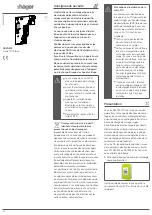
Rastergraf
2-10 Installing Your Peritek Graphics Board
2.5 Eclipse3PCI Board Installation
The Eclipse3PCI board is “Universal PCI” device and is designed to plug
into any standard PCI 2.2 specification compatible backplane. Although it
is a 32-bit device, it includes the 64-bit expansion connector to take
advantage of the extra power and ground pins (no signals are used). It can
be plugged into a slot which uses either 5V or 3.3V signaling protocol.
Note:
The Eclipse3PCI boards require both 3.3V and 5V. Most AT style
motherboards do not supply 3.3V to the PCI connectors. If the computer is
listed as PCI 2.0 or 2.1 compliant, it probably does not supply 3.3V.
By special order, Rastergraf can supply the graphics board with a local
3.3V regulator installed. Please contact Rastergraf for assistance.
Installing the PCI Graphics Board
Note:
Refer to
Section 2.3.3
for the settings for JP101, JP201, and JP233.
1. Shut down the operating system and
turn off the power
.
Warning!
Never open the computer without turning off the power supply. Unless
internal AC wiring is exposed, leave the power cord plugged in, so as to
ground the computer chassis. You can easily get shocked, ruin computer
parts or both unless you turn off the power. Even with power switched off,
lethal voltages can exist in the equipment.
2. Open the computer and find an empty PCI slot.
When installing the card you have to watch out because the slot (see
Figure 2-5) between the 32-bit and 64-bit parts of the PCB connector
is quite narrow. PCs sometimes have PCI connectors that have overly
thick moldings, requiring the slot to be widened. Should you encounter
this problem, please contact Rastergraf for assistance.
















































